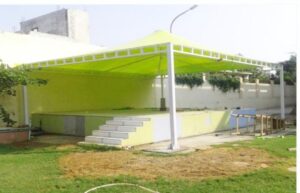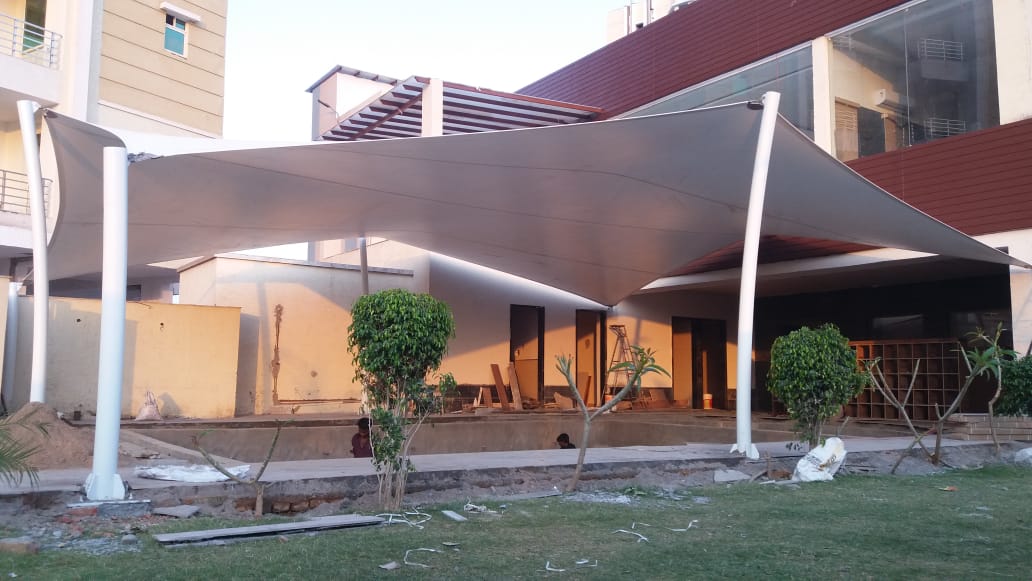Tensile Structure for Building
Tensile structures are a fantastic choice for buildings because they offer a blend of functionality, aesthetics, and sustainability. Here’s a rundown of what you might want to consider:
- Material Selection: Tensile structures typically use materials like steel, aluminum, or even wood for their framework, and a variety of fabrics such as PVC, ETFE, or PTFE for the membrane. Each material has its own advantages in terms of durability, cost, and appearance.
- Design Flexibility: Tensile structures allow for a wide range of design possibilities. They can be shaped into curves, domes, cones, or even free-form shapes, giving architects and designers immense creative freedom.
- Strength and Stability: Despite their lightweight appearance, tensile structures are incredibly strong. The tensioned membrane distributes forces evenly, providing stability against wind, snow, and other loads.
- Natural Light and Ventilation: The translucent properties of many tensile membrane materials allow natural light to penetrate the building, creating a bright and inviting interior space. Additionally, strategic placement of openings can facilitate natural ventilation, reducing the need for mechanical HVAC systems.
- Energy Efficiency: Tensile structures can contribute to energy efficiency by reducing the need for artificial lighting during the day and by allowing for passive ventilation. They can also support the integration of solar panels or other renewable energy systems.
- Quick Construction: Compared to traditional building methods, tensile structures can often be erected more quickly, reducing construction time and costs.
- Sustainability: Tensile structures are inherently sustainable. They use fewer materials compared to traditional buildings, and many of the materials used, such as steel and fabric, are recyclable. Additionally, the lightweight design reduces the environmental impact associated with transportation and foundation requirements.
- Maintenance: Proper maintenance is essential to ensure the longevity of a tensile structure. Regular inspections and cleaning can help prevent issues such as fabric degradation or corrosion of the framework.
- Cost Considerations: While tensile structures can be cost-effective in the long run due to their durability and energy efficiency, they may have higher initial costs compared to conventional buildings. However, factors such as reduced construction time and lower operating expenses can offset these upfront expenses over time.
- Regulatory Compliance: Ensure that your tensile structure complies with local building codes and regulations. Depending on the location and use of the building, there may be specific requirements regarding fire safety, wind resistance, and structural integrity.
By considering these factors, you can create a stunning and functional tensile structure that meets your specific needs and requirements.







